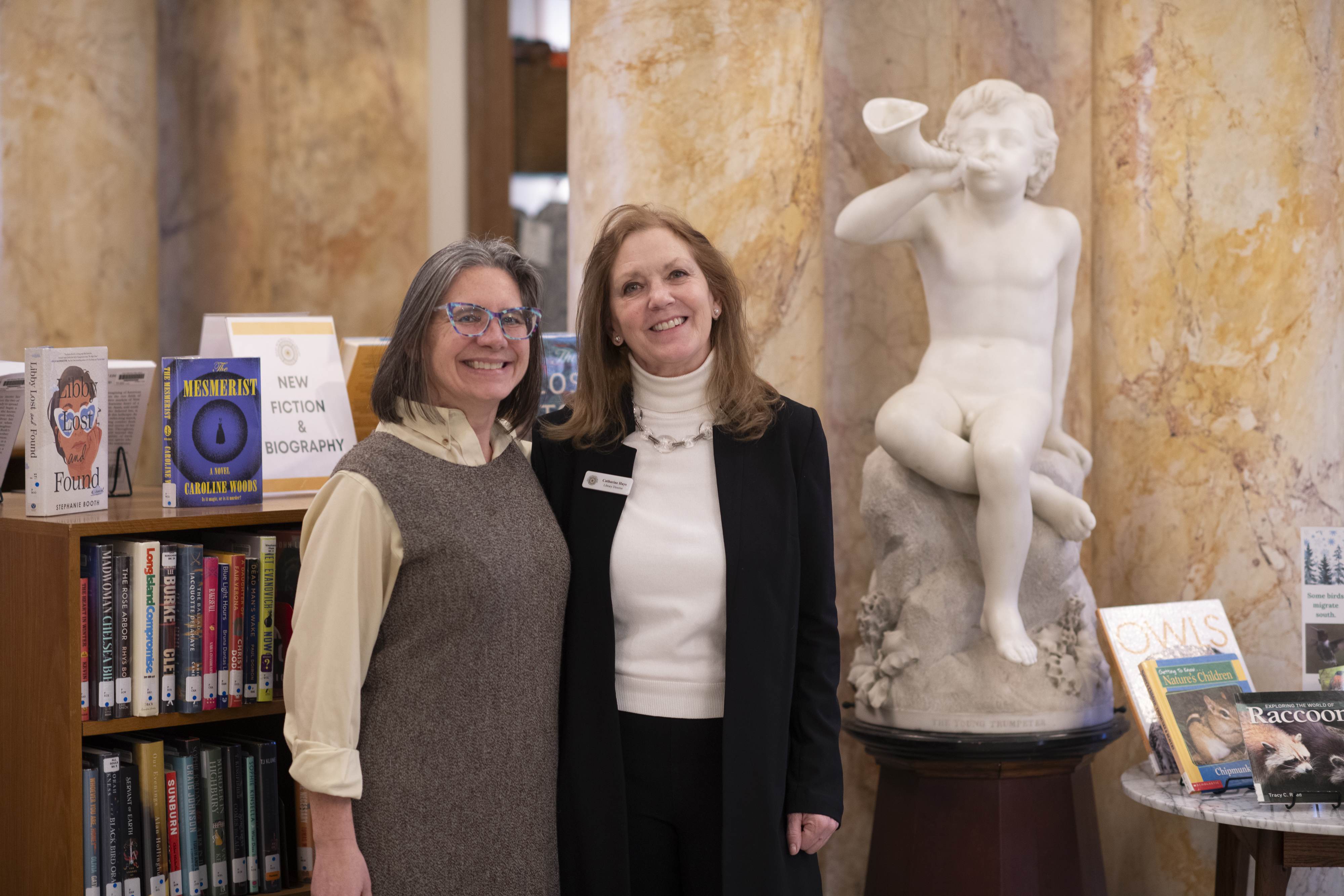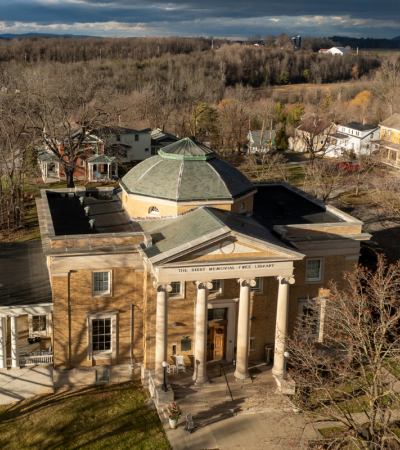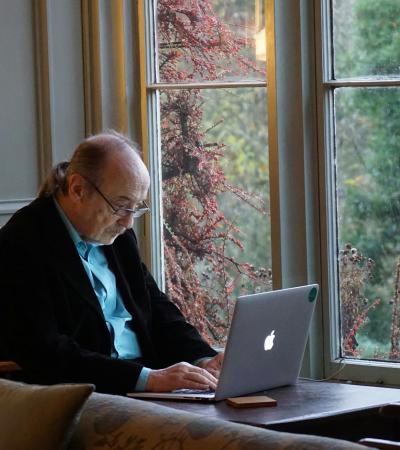Strategic planning is an ideal way to formalize a library’s commitment to accessibility. As the evaluator of the American Library Association’s “Libraries Transforming Communities” (LTC) project, we’ve had the opportunity to see how numerous small and rural libraries throughout the US are creating strategic plans that make accessibility a key goal. In this blog post, we highlight some of the key processes that have helped small and rural libraries make accessibility a top strategic goal—while also sharing the new accessibility objectives that have resulted from their efforts.

Strategic Planning at the Bixby Memorial Free Library
Having gathered extensive feedback from its community, one library decided to make accessibility a priority in its strategic plan. Bixby Memorial Free Library (“the Bixby”), serves the city of Vergennes, VT, as well as the surrounding communities of Addison, Ferrisburgh, Panton, and Waltham. Recently, the library was awarded an LTC: Accessible Small and Rural Communities grant to enhance accessibility for individuals with mobility disabilities. They held various “community conversations”— a requirement of the grant—and collected survey input about what patrons saw as the main challenges to accessibility and potential solutions.
This input, along with ongoing concerns shared by the staff, Library Director Catharine Hays, and the Bixby Board of Trustees, inspired the board to center “Belonging” as one of the library’s three strategic goals. While the Board had long recognized the importance of addressing accessibility, it was the tangible community input that helped formalize a commitment in the library’s strategic plan with the term, “Belonging”. As Hays put it, once the feedback was offered, "it was hard to ignore that it’s real and we were inspired to make it as warm and welcoming as possible." The Bixby’s strategic plan for 2024-7 aspires towards a library that is “A place where partnerships flourish with no physical barriers to accessibility.”
Corresponding objectives include:
- Expand and improve emergent programming with age-diverse and equity-oriented lenses;
- Minimize physical barriers to all spaces in the building; and
- Conduct a “welcome audit” to determine who the Bixby is and is not reaching, and develop strategies to make all feel they belong.
Tom Borchert, Chair of the Board's Strategic Planning Committee, emphasized that the Board strongly supported the new strategic plan goals. "There was a lot of consensus... it felt like the whole Board was solidly behind them," he said. He also explained why accessibility is integral to the overarching goal of Belonging, noting, "Belonging is, in part, about understanding who comes to the library and who doesn't—and why. Once you're here, can you move around?" Erin Roche, the Bixby Board President, echoed this sentiment, stressing that accessibility was a core focus of the strategic redesign.
"We wanted accessibility to be seen as the way, not just something that's 'over here' for those who need it."
Hays, Roche, and Borchert view the strategic plan as a tool to keep accessibility at the forefront and ensure accountability. However, they were quick to acknowledge that the work is ongoing. Borchert put it this way: “Strategic plans are never really ‘done.’ They’re about deciding what to prioritize for the next three to four years.” He added, “I don’t think we’ll have fully resolved this by the end of 2027.” While all of the strategic plan objectives may not be fully achieved in the near term, the Bixby team’s commitment remains unwavering. As Borchert pointed out, regular board meetings and ongoing discussions help keep the team focused on the plan’s aspirations.
Strategic Planning at Belen Public Library
The Bixby is not alone in its efforts to incorporate accessibility into its strategic plan; other LTC Access grantees have undertaken similar initiatives. In New Mexico, staff at the Belen Public Library focused their LTC grant efforts on a specific audience while also developing the goals for its next strategic plan. “We realized that, especially post-pandemic, we had a growing number of patrons who were either unable to visit the library or found it more difficult to navigate the physical space,” they noted. To inform their 2023-2025 strategic plan, they drew on a range of data, including a community needs assessment, patron usage statistics, City Council discussions on ADA compliance, staff input, 2020 census data, and local observations. The plan now includes three goals to improve services for individuals with disabilities:
- Increase by 10% per year library services support for home-bound residents, including awareness of electronic resources for those with Internet at home;
- Improve the physical accessibility and sustainability of the library facility, supporting ADA compliance and community disaster preparedness; and
- Expand services for the blind and print-disabled patrons through partnership with the Library of Congress resources.
Other Examples of Accessibility-Centered Strategic Planning
Three other libraries were able to devote a portion of their LTC funds to strategic planning. In Iowa, the Cherokee Public Library aligned their grant work with their strategic plan to better serve homebound seniors. Much like the Bixby, the strategic planning process and community conversations went hand-in-hand, helping the library identify and prioritize how to meet the needs of its community.
Another LTC library, Thomaston Public Library in Thomaston, Connecticut, was working on its first ever strategic plan at the time of the grant award. They became convinced that incorporating accessibility concerns into their library’s plan just made sense. In their grant application, the library said, “We've already talked to members of the community as part of our preliminary strategic plan work, and that has also led us to more people and the realization that the best way to do something is to start; and also, of course, ‘nothing about us without us.’"
In Mississippi, the Sunflower County Library System approved a four-year strategic plan that centers accessibility. Through this plan, the library system has committed to ensuring that its website meets revised ADA standards, and to remodeling all branch locations in accordance with ADA requirements. While the second of these objectives is a “major challenge” in rural areas, says the system’s director, Mary Ann Griffin, the first has already been completed. Moving forward, Griffin notes that in order to improve their accessibility services, the library system will also “need to invest in staff training to understand the various technologies and resources available to implement these services.”
Let’s Put it to Work!
There are a variety of helpful resources for incorporating accessibility into strategic planning, particularly in connection with broader DEAI efforts. In addition to taking inspiration from the above examples, the following are worth looking into:
- Making Change from Within: Integrating Accessibility into Strategic Planning and Assessment – A conference presentation (see transcript here) in which two staff members at the Montana State University Library outline different strategies for fitting accessibility into libraries’ existing strategic plans.
- The University of Michigan Library’s Diversity, Equity, Inclusion, and Accessibility Plan – A 42-page report outlining the University of Michigan Library’s plans for creating environments that are accessible to all patrons, regardless of their physical, sensory, cognitive, or technological abilities.
- Building Inclusive Futures: Sustaining DEAI Momentum with Strategic Planning – A video presentation from a DEAI workgroup at The Miami University Libraries that shares best practices in the development of effective DEAI strategic plans.
Along with these resources, there are a number of helpful general guides to strategic planning in libraries — including:
- Strategic Planning for Public Libraries book (Public Library Association)
- Strategic Planning Workbook (Virginia Public Libraries)
- A Library Board's Practical Guide to Strategic Planning (United for Libraries)
- Strategic Planning Libguide (Massachusetts Library System)
About this Article
This article was written by Knology – evaluator of the LTC Access initiative. The article is part of a series of blog posts exploring how libraries that received LTC Access funds are working to better meet the needs of patrons with disabilities.
In other posts in this series, we provide a general overview of the accessibility projects these libraries have launched, look at attempts to put the disability rights movement’s ethic of “Nothing About Us Without Us” into practice, consider efforts focused on neurodivergent patrons and older adults, and look at how small and rural libraries are creating accessible community conversations. You can also read about how these libraries are overcoming challenges to planned accessibility upgrades, building partnerships to address community accessibility needs, and improving patrons’ experiences. And for stories of what individual libraries are doing, see the case studies we’ve published about the accessibility work going on at the Lee Public Library, Jessie E. McCully Memorial Library, Beals Memorial Library, and Bixby Memorial Free Library.
For more on how libraries can become more accessible to patrons with disabilities, see the collection of resources we assembled.
Photos courtesy of Caleb Kenna.



